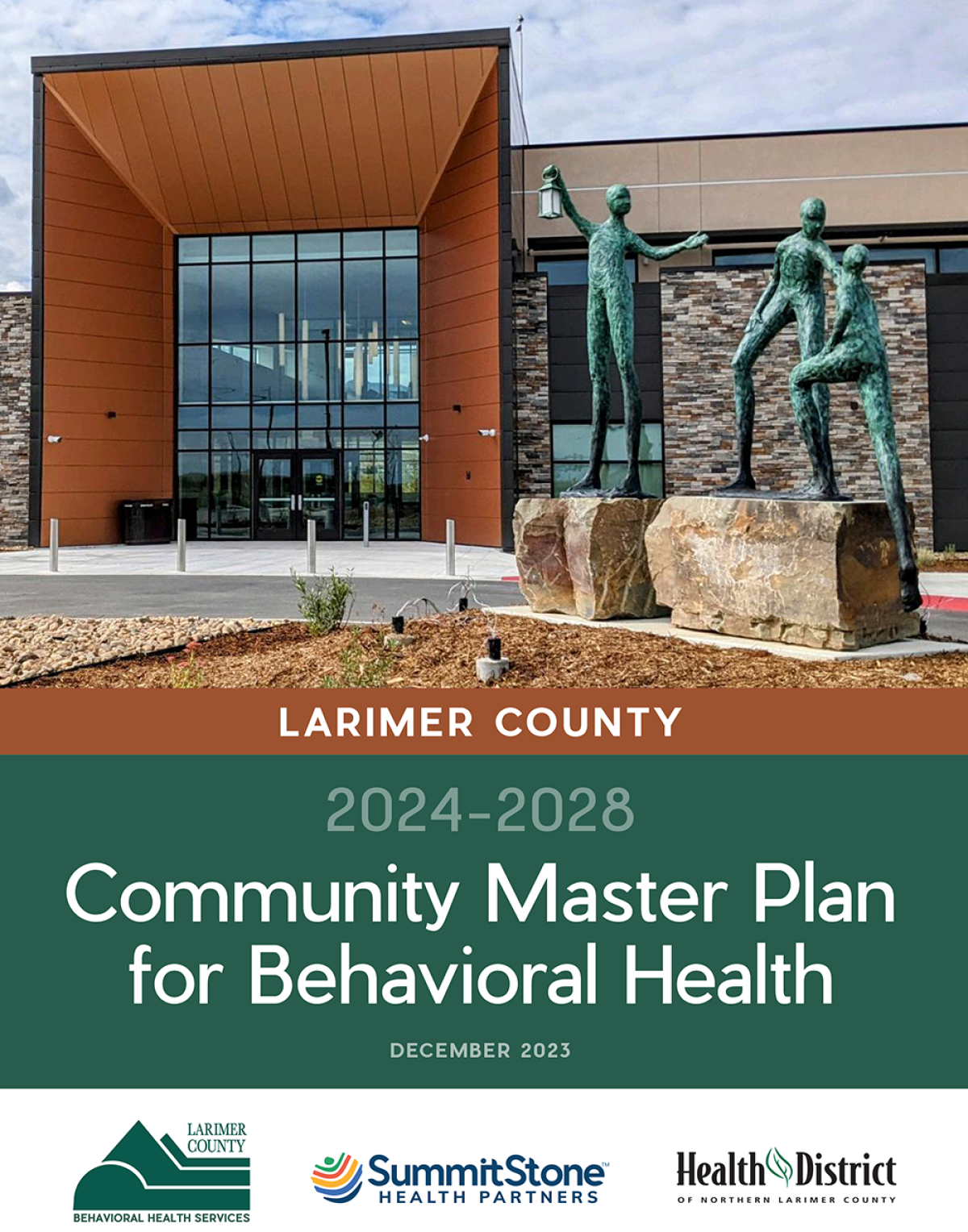
Larimer County Community Master Plan for Behavioral Health
CHI helped Larimer County Behavioral Health Services and its partners research and write a comprehensive plan
Executive Summary
The Community Master Plan (CMP) for Larimer County, commissioned by Larimer County Behavioral Health Services and sponsored by SummitStone Health Partners and the Health District of Northern Larimer County, is a five-year strategic plan for creating opportunities that address the community’s behavioral health needs and improve the quality of life for county residents. This CMP is the second iteration and is designed to guide investment and partnership efforts from 2024 through 2028. The report was designed as an accessible resource for the community at large.
Context
Larimer County’s residents have needs across the behavioral health care spectrum. Thousands of people in the county need treatment and/or recovery services for mental health or substance use-related issues. These issues can be acute or chronic, and they can impact people of all ages, backgrounds, and lived experiences.
The community faces a mix of local and systemic challenges in responding to these needs. From gaps in early childhood behavioral health services to insufficient workforce recruitment and retention to the worsening shortage of affordable housing, the challenges can feel daunting. Tackling them and achieving measurable progress will require a collective effort from a diverse group of local partners, including county government, health care providers, community-based organizations, and others.
Voters provided important financial resources for this work, with a commitment of 20 years, when they approved Ballot Issue 1A in 2018. Larimer County has made encouraging strides in its efforts to improve behavioral health services and outcomes for local residents since then. The recent opening of the Acute Care Facility on the Longview™ Campus represents one important and tangible step forward in expanding local capacity to meet behavioral health needs. Still, there is much work to do.
2024−2028 Recommendations
An overview of the 14 recommendations is provided here, with additional detail for each recommendation available in the CMP.
1. Facility Evaluation
Evaluate metrics and goals to measure successes and challenges of the new Acute Care Facility on the Longview™ Campus.
2. Interagency Collaboration and Alignment
Reduce silos and duplication by collaborating in new ways among county agencies and health organizations.
3. Youth Services Feasibility Study
Develop a plan for assessing the financial feasibility, licensing requirements, workforce capacity, and community demand for acute and chronic youth behavioral health services.
4. Care Coordination
Use a new or existing centralized referral hub to strengthen care coordination and network partnerships for behavioral health and social needs.
5. Crisis Alternatives
Expand proven programs that divert people experiencing acute mental health and substance use events from jails and emergency departments and monitor the use of the new Acute Care Facility to assess its impact on reducing the use of these settings.
6. Impact Fund Grants
Modify and then annually evaluate the Impact Fund’s application criteria and award process and consider multiyear grant options.
7. CMP Implementation
Create an annual meeting for the Executive Sponsors and Guidance Team to assess progress on the CMP’s recommendations and identify needs and roles for the year ahead.
8. Adult-Focused Programs
Expand funding opportunities to support mental health and substance use prevention and treatment programs that are tailored for adults in distinct life phases.
9. Youth-Focused Programs
Tailor and increase investments in school- and home-based programs, peer programs, and initiatives that offer substance use and mental health prevention and treatment services for youth, including infants and young children (ages 0-5).
10. Workforce Supports
Create or invest in opportunities to expand the behavioral health workforce pipeline and offer meaningful compensation for providers.
11. Underserved Communities
Invest in community-based organizations and initiatives that serve populations with unique behavioral health needs, including rural communities, LGBTQ+ individuals, unhoused people, individuals earning low-incomes, and historically marginalized racial and ethnic groups.
12. Affordable Housing
Invest in programs that offer equitable opportunities for community members to purchase and remain in affordable homes, and work to infuse behavioral health supports in the places people live.
13. Community Connection
Reduce isolation by introducing and expanding equitable opportunities for strengthening connections and building social networks.
14. Community Awareness and Education
Evolve public awareness campaigns to further reduce stigma, build support for prevention, and demonstrate the connection between behavioral health outcomes and the social determinants of health.

